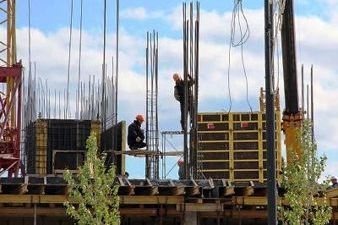
New York – World Bank Group President Jim Yong Kim announced on September 25 a ground-breaking initiative to reach 300 of the largest cities in the developing world in the next four years to help them plan for a low-carbon future and get capital flowing so they can finance those plans. The effort has the potential to improve the lives of over 700 million people in those cities and billions more globally as emissions are reduced.
The developing world’s fast-growing cities face major challenges as they plan for the future: they have to provide services and infrastructure to an ever-growing population and manage the vulnerabilities that come with a changing climate, all the while preserving public health and securing economic growth.
It’s even harder than it sounds. A recent internal analysis by World Bank staff found that only about 20 percent of the world’s 150 largest cities have even the basic analytics needed for low-carbon planning today, and that of the 500 largest developing country cities, only about 4 percent are creditworthy in international financial markets and 20 percent in local markets, making access to finance a serious challenge.
To help these cities, the World Bank announced the launch of the Low-Carbon Livable Cities (LC2) Initiative with the goal of reaching 300 of the world’s largest developing country cities with planning and financing support over the next four years. The new initiative will offer a comprehensive suite of tools and activities tailored to cities’ specific needs and level of progress on their climate-smart development path.
“Climate change poses one of the toughest challenges facing us today. It’s not just an environmental issue – it’s an economic issue that has the potential to put prosperity out of the reach of millions of people,” said World Bank Group President Jim Yong Kim speaking in New York on September 25. “Cities offer a unique opportunity to tackle climate change. The good news is that city leaders are not waiting for international agreements to take action. There are many cities in the developing world that want to take a climate-smart development path and that is where our new Initiative comes in.”
The Low-Carbon Livable Cities Initiative has two areas of focus: planning and financing.
Planning starts with building greenhouse gas inventories by rolling out the Global Protocol for Community Scale Emissions, a new and comprehensive methodology that quantifies the greenhouse gas emissions associated with economic activity and consumption occurring in a city, created with partners including WRI, the C40 network, ICLEI, UNEP, and UN-Habitat. The World Bank and its partners are developing an accreditation program to train city officials and private sector professionals to conduct greenhouse gas inventories using the new methodology.
Cities already account for about two-thirds of the world’s overall energy consumption and about 70 percent of global greenhouse gas emissions. A low-carbon development path could help them cut global greenhouse gas emissions by 30 percent, according to World Bank estimates.
To support cities access the needed financing, the World Bank and its partners have designed a City Creditworthiness Program. It will help city financial officers conduct thorough reviews of their municipal revenue management systems and take the first steps to qualify for a credit rating. The inaugural session of this program will be held on October 14-19 in Nairobi, Kenya, and additional trainings are planned in Korea, India and Colombia. Every dollar invested in the creditworthiness of a developing country city is estimated by the World Bank to be able to mobilize more than US $ 100 in private sector financing for low-carbon and climate-resilient infrastructure.
A second financing effort involves innovative mechanisms, such as pooled financing structures. The initiative will help connect cities that wish to finance the same type of investment to help them access the market together at better financing terms. One example currently under development is the International Lighting Efficiency Facility (iLEF), which will finance LED street lighting in several cities, for a cumulative investment of over $ 1 billion. The savings from increased energy efficiency will cover both the principal and the interest.
Over $ 1 trillion a year is needed to finance the infrastructure gap between what is needed and what is being built in low- and middle-income countries, and 70 percent of that are financing needs of cities. The Initiative offers tools that can leverage official development aid, currently about $ 125 billion, to get other sources of financing flowing to cities at scale. “As a development bank, helping cities access private financing for their low-carbon development plans is one of the smartest investments we can make,” said Kim.
Applying a climate lens to cities’ development plans means that energy savings will free up fiscal space for other investments, resilient infrastructure will withstand the forces of nature, and citizens will have cleaner air to breathe. “For municipal governments, finding their way to a low-carbon development path is a question of competitiveness, growth and public health,” said Rachel Kyte, World Bank Vice President for Sustainable Development.
Source: The World Bank.

















